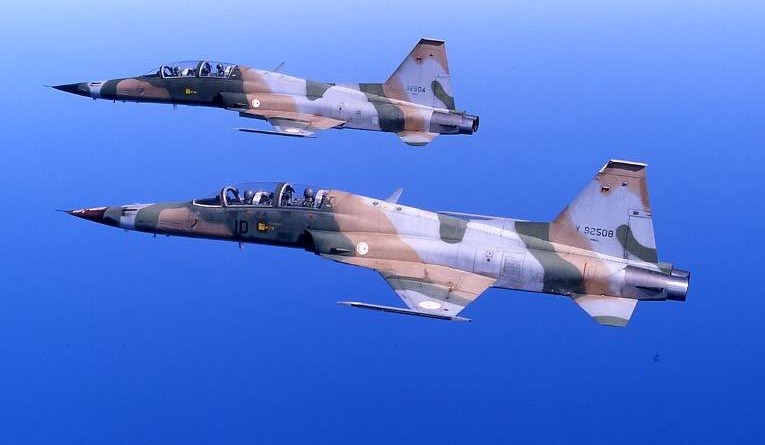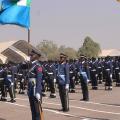Moroccan F-16s, Tunisian F-5s, and USAF B-52 bombers hunts American destroyer in exercise
It’s not often that African Air Forces get the opportunity to operate alongside United States Air Force B-52 Stratofortress bomber in a multi-domain combat capability and interoperability exercise.
On Monday, 7 September, two USAF B-52s—call-signs “Bush 11” and “Bush 12” from the US Strategic Command, flew south to the Mediterranean Sea in support of US Africa Command interoperability training mission.
Hunting Roosevelt
The bombers linked up with four Moroccan air force F-16s to demonstrate maritime interdiction capabilities by hunting and intercepting the USS Roosevelt, which simulated a hostile vessel.
The exercise, “demonstrated the professionalism, agility, and capabilities of our forces with international partners to address today’s complex and dynamic global security environment, as well as our commitment to ensuring freedom of navigation in the Mediterranean Sea,” said Maj. Gen. Joel Tyler, US Africa Command Director of Operations.
Morocco’s Harpoon Armed F-16s are the perfect platform for this sort of exercise. In order to increase the capabilities of its Lockheed Martin F-16 Fighting Falcon combat aircraft in naval warfare, the Royal Moroccan Air Forces bought dozens of Boeing AGM-84L Harpoon Block 2 anti-shipping missiles from the United States in a deal worth $62 million.
The Harpoon AShM can engage a wide variety of targets, both on land and at sea, such as coastal batteries, surface-to-air missile sites, aircraft and airfields, port or industrial facilities, and ships anchored at the harbour.
“Conducting these missions alongside our African partners shows the strategic reach of our joint force and our collective commitment to preventing malign influence in Africa,” Maj. Gen. Joel Tyler disclosed.
With the excellent performance of the F-16s in Moroccan service, the country is seeking for even more. In August, the United States Department of Defence awarded Lockheed Martin a contract to produce and supply Morocco with twenty-four F-16 Viper multi-role fighter jet through its foreign military sales contract.
Tunisian Air Force venerable F-5s still shines
After the mock attack run on the Navy destroyer USS Roosevelt on Monday, the two B-52s then met up with F-5 fighter jets from the Tunisian Air Force the next day for more training before heading back to Fairford.
With a manpower of just 4000, the F-5 fighters are Tunisia’s most capable combat aircrafts. The 12 single-seat F-5Es and three two-seat F-5Fs operates from Bizerte-Sidi Ahmed on Tunisia’s north coast.
Tunisia’s F-5s are now severely aged, the North African country acquired a batch of F-5s in 1984 and ‘85 and another batch in ‘89.
In 2013, Northrop Grumman NOC was contracted to update the F-5Es with GPS in a deal worth $60 million. One F-5 crashed in 2018—the pilot ejected.
With the F-5s starting to show its age, Tunisia is reported to be in search for new fighter jet. Three aircraft are in the lead for Tunisia’s fighter jet requirement, these includes the General Dynamics F-16, SAAB JAS 39 Gripen, and Aero Vodochody which is offering its next-generation L-39NG Albatross light attack and trainer aircraft.
Africa remains vital to America’s interests
This type of “combined theater security” exercises which the Moroccan F-16s and Tunisian F-5s took part in are regularly conducted by the USAF.
“The security and stability of the African continent remains a vital US interest.”
“These efforts demonstrate the professionalism, agility, and capabilities of our forces with international partners to address today’s complex and dynamic global security environment, as well as our commitment to ensuring freedom of navigation in the Mediterranean Sea,” the AFRICOM director stated.
These missions also enable US and international partners to maintain a high state of readiness, interoperability and proficiency, strengthening the ability of the US and international partners to address mutual security challenges and goals, Africa Command said.
“These missions are another tangible way we demonstrate our commitments to our African partners,” said Tyler.



